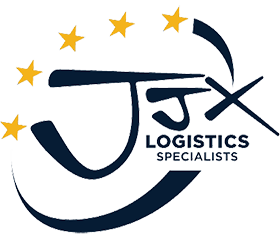Transport and logistics are a collection of processes involved in the production, storage, inventory, delivery, and distribution of specific goods or services. Sometimes referred to as transportation and logistics, it is an integral element of the whole supply chain and it involves proactive procedures to move products safely and efficiently from the manufacturers to the sellers, and up to the end users or the consumers.
The primary goal of managing transport and logistics- especially for businesses and those in cargo consolidation- is to properly oversee the flow of supply from point A to B, and for customers to receive products on time, damage free, and according to expectations.
The logistics industry is responsible for moving products domestically and internationally and is therefore a huge contributor to economic development. According to a report released by Allied Market Research, the transport and logistics market is projected to grow at $12,975.64 billion by the year 2027!
Importance
Companies utilize transportation and logistics for various reasons and optimizing them offers significant advantages not just for the company but for the supply chain in general. Transport and logistics’ main role can also vary per business, but its importance and benefits generally include the following:
- Increases efficiency- Just like any other business practice that aims to simplify processes, optimizing transportation and logistics increases operational efficiency. Actively tracking the movement of products helps spot errors and discrepancies in the supply which in turn enables businesses to address them proactively.
- Lower costs- Managing transport and logistics properly provides better visibility in the supply chain. This allows businesses to avoid unnecessary purchases, eliminate unproductive activities, implement recognized areas for improvement, and overall manage costs better.
- Improves production turnout- An optimized transport and logistics process helps streamline operations, reduce downtime, and generally improve business performance.
- Enhances inventory management- Greater supply chain visibility prevents material stockout and material overstock, avoids damages in products, and enables businesses to manage inventory more efficiently.
- Prevents disruption in the supply chain- As an integral unit of the supply chain, an organized transport and logistics system helps spot inefficiencies in the process. It also enables companies to address issues before they cause disruption and significantly affect business operations.
To summarize, when executed properly, an optimized transport and logistics system can improve customer experience and give businesses stronger industry reputation.
What is the difference between transport and logistics?
Steps involved in the transportation and logistics may vary based on the industry the business is in and according to the actual product they produce. “Transportation” and “Logistics” are also often used interchangeably, but what really is the main difference between transport and logistics?
Transportation
As the name suggests, transportation is the operation involved in the actual physical delivery or movement of products from one place to another. It’s part of the larger system of logistics and considers factors such as secured item packaging, best delivery route, and the most appropriate mode of transport. Its functions are further divided into three areas that businesses must observe to ensure effective logistics operations:
- Operations management- or the organization of processes involved in making goods and delivering services
- Vehicle and fleet management- or the coordination of delivery vehicles to ensure optimum and efficient use of recourses
- Infrastructure administration- or securing all infrastructures involved in the logistics process such as roads, ports, airports, canals, rails, and pipeline networks, among others
Logistics
Logistics is a bigger business unit which refers to the procedures involved in the supply chain that intend to safely and timely deliver goods and services to consumers. Aside from transportation, the following processes can be considered under the umbrella of logistics:
- Material Sourcing
- Warehouse Receiving
- Product Storage
- Inventory Managing
- Fulfilling Orders
- Packaging
- Shipping
- Delivery
- Distribution
Top Challenges
Diverse industries encounter significant challenges for various reasons and the sector of transport and logistics also face them. Based on the report released by the International Finance Corporation, both small-to-medium and large logistics companies experienced setbacks caused by the Covid-19 pandemic. Other challenges faced by the industry include:
- Rising fuel prices
- Driver shortages
- Meeting customer satisfaction
- Sustainability concerns
We're ready when you need us

